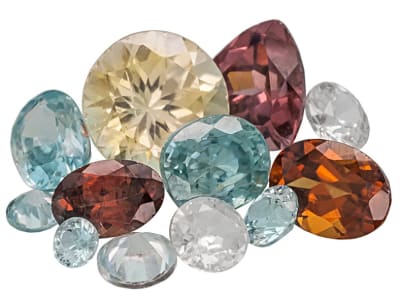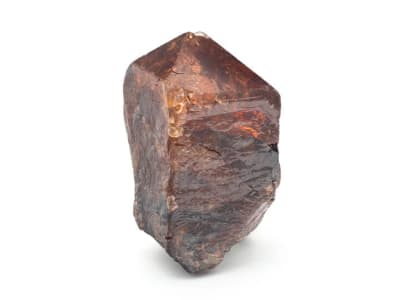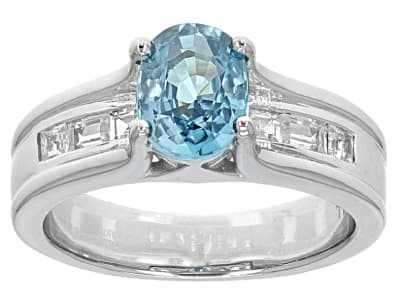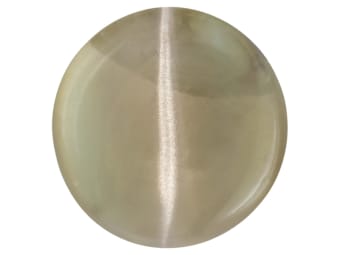The oldest zircons on earth have been found in the Jack Hills of the Narryer Gneiss Terrane of Western Australia. They date to 4.35 billion years ago. Colorless zircons have long been used as a diamond simulant. The typical range of colors for zircon includes white, yellow, orange, red, brown, black, blue, green, and violet. Sizes up to 10 carats are readily available. Zircon is a natural gemstone and should not be confused with synthetic cubic zirconia. The two materials have different chemical compositions and crystal structures.
General Information
LWUV: Variable
Zircon Colors
-
 Blue
Blue -
 Brown
Brown -
 Green
Green -
 Orange
Orange -
 Pink
Pink -
 Red
Red -
 White
White -
 Yellow
Yellow
Zircon Spectra
We acknowledge the significant scientific contributions of John S Harris, FGA to the study of gemstone spectra and with deep appreciation to him, acknowledges the use of his images and related notes about gemstones and their spectra in the educational materials on this website.
Alternate Names
High Zircon, Medium Zircon, Low Zircon Or Metamict, Hyacinth, Jacinth, Jargoon Or Jargon, Beccarite, Melichrysos, Sparklite, Starlite, Stremlite
Countries of Origin
Benin; Papua New Guinea; Angola; Cambodia; Kazakhstan; Paraguay; Portugal; Solomon Islands; Greece; Mongolia; Morocco; Unknown; Mali; Guatemala; Guyana; Iraq; Chile; Nepal; Argentina; Seychelles; Ukraine; Ghana; Zambia; India; Canada; Turkey; Belgium; Namibia; Finland; South Africa; Peru; Venezuela (Bolivarian Republic of); Germany; Yemen; Tanzania, United Republic Of; Eritrea; Viet Nam; Guinea; Somalia; Madagascar; Thailand; United Kingdom of Great Britain and Northern Ireland; Libya; Sweden; Malawi; Saint Helena, Ascension and Tristan da Cunha; Liechtenstein; Poland; Bulgaria; Nigeria; Tunisia; Croatia; Syrian Arab Republic; Sri Lanka; United Arab Emirates; Kenya; Switzerland; French Polynesia; Spain; Djibouti; Cuba; Burkina Faso; Mauritania; Swaziland; Congo (the Democratic Republic of the); Israel; Australia; Tajikistan; Estonia; Myanmar; Cameroon; Malaysia; Iceland; Oman; Bosnia And Herzegovina; Armenia; Gabon; Austria; Mozambique; Korea (the Republic of); Luxembourg; Brazil; Algeria; Cabo Verde; Jersey; Slovenia; Lesotho; Colombia; Ecuador; Hungary; Japan; Belarus; Mauritius; Taiwan (Province of China); Bolivia (Plurinational State of); Lao People's Democratic Republic; New Zealand; Senegal; Honduras; Italy; Antarctica; Ethiopia; Afghanistan; Burundi; Russian Federation; Czechia; United States of America; Egypt; Sierra Leone; Malta; Saudi Arabia; Netherlands; Pakistan; China; Ireland; Slovakia; France; Lithuania; Serbia; Kyrgyzstan; Cote D'Ivoire; Romania; Falkland Islands [Malvinas]; Niger; Philippines; Rwanda; Uzbekistan; Bangladesh; Barbados; Norway; Dominican Republic; Mexico; Uganda; Zimbabwe; Suriname; Greenland; Indonesia
History
Zircon is a beautiful, natural gemstone with a high refractive index and strong dispersion, a gemological way of saying well-cut zircon is actively brilliant and full of fire! What's more, it is available in a broad color range - yellow, brown, orange, red, violet, green, blue, and colorless. When a vast supply of blue zircon hit the world market in the 1920s, George Kunz became suspicious. Before that, most zircon were brown to green. George suspected treatment. Sure enough, a little investigation revealed that the lovely blue stones were heat treated. Interestingly, when the truth was revealed, the stone's popularity remained steady. Why? Savvy consumers loved the blue of the stone so much, they simply didn't care. Zircon is a wearable stone (7 ½ on the hardness scale) whose clear, compelling colors make it as popular today as it was in the 1920s.
Care
Avoid sharp knocks and harsh wear with all Zircon. Avoid prolonged exposure to UV lighting, such as tanning beds and nail polish curing lights, to avoid temporary alteration of color in blue and colorless varieties.
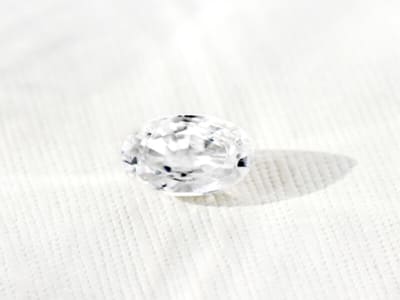
More About Zircon
Marbode, in the 11th century, wrote that zircon was an excellent amulet for travelers and would ensure safety, rest and a warm welcome at the end of a journey. Some later cultures attributed the stone with lending prudence in practical things (linked thereby to financial success), and providing protection from lightning, What do we believe about zircon? We believe that it is lovely. Slow down. Take your time. Enjoy a look at each of those memorable colors.
